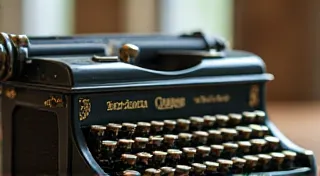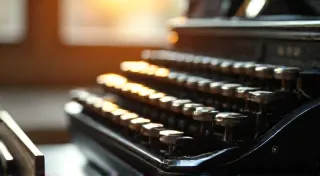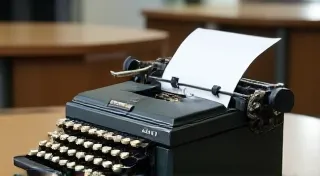Dealing with Rust on Vintage Typewriters: Prevention and Removal
Rust is the enemy of any vintage typewriter. It creeps in, clinging to metal parts, seizing mechanisms, and diminishing the beauty of these incredible machines. Dealing with rust effectively – both preventing it and removing it when it appears – is a crucial part of typewriter restoration and preservation. This guide offers practical advice for protecting your vintage typewriters and tackling rust when it does develop, regardless of brand.
Understanding Rust and Why It Happens
Rust, chemically known as iron oxide, forms when iron or alloys containing iron (like steel) are exposed to oxygen and moisture. Vintage typewriters, often stored for decades in less-than-ideal conditions, are particularly susceptible. Factors contributing to rust formation include:
- Humidity: High humidity accelerates the rusting process.
- Lack of Lubrication: Dry mechanisms are more prone to corrosion.
- Exposure to Air: Oxygen is a key ingredient for rust.
- Contaminants: Salts, acids, and other contaminants can exacerbate the problem.
Different typewriter brands (like Underwood, Royal, Smith Corona, and Olivetti) may have varying degrees of susceptibility due to their construction materials and internal design. For instance, some models might have more exposed steel components than others. Understanding the intricacies of specific models, like those found in a Smith Corona Silent, can sometimes offer clues to their individual rust-prone areas. The complexity of restoration work often demands specialized knowledge, and sometimes a comprehensive guide is necessary to navigate these intricacies. Projects involving older models, like the Underwood 5, can be particularly challenging, requiring in-depth familiarity with their unique construction and common failure points. A dedicated guide to the Underwood 5 restoration guide can prove invaluable to anyone tackling such a project.
Prevention is Key: Protecting Your Typewriters
The best approach to rust is prevention. Here's how to keep your vintage typewriters safe:
- Storage: Store your typewriters in a dry, climate-controlled environment. Basements and attics are often problematic due to fluctuating temperatures and humidity. Consider using a storage unit designed for sensitive items if home storage isn't ideal.
- Desiccant Packs: Place desiccant packs (silica gel) inside the typewriter to absorb moisture. Replace these regularly, as their effectiveness diminishes over time.
- Regular Cleaning: Dust and debris can trap moisture. Regularly clean your typewriter with a soft brush and compressed air. Pay particular attention to areas where rust tends to accumulate, such as the carriage rail and the space bar.
- Lubrication: Apply a thin layer of typewriter oil or a similar lubricant to moving parts. This prevents rust and keeps the mechanism functioning smoothly. Use a lubricant specifically designed for vintage machinery – avoid petroleum-based products which can damage rubber and plastic.
- Protective Covers: Use fitted dust covers when the typewriter isn't in use.

Rust Removal: A Step-by-Step Guide
If rust has already formed, don't panic! Careful removal can restore the typewriter's appearance and functionality. Always test any method on a small, inconspicuous area first. The intensity of rust issues can vary dramatically, especially when considering the artistic legacy chronicled in "Chromatic Decay: The Palimpsest of Ink and Rust on Royal Standard Machines." Here’s a tiered approach, starting with the gentlest methods:
1. Gentle Cleaning: Soap and Water
For light surface rust, warm water and mild soap can sometimes do the trick. Use a soft cloth or brush to gently scrub the affected areas. Rinse thoroughly and dry immediately. This is safest for painted or finished surfaces. However, be aware that aggressive scrubbing can damage delicate finishes.
2. Vinegar Soak
Vinegar is a mild acid that can dissolve rust. Soak small, removable parts in white vinegar for several hours or overnight. Check periodically and scrub with a soft brush. Rinse thoroughly and dry immediately. Be cautious with vinegar on painted surfaces – it *can* damage the paint if left too long. Always dilute vinegar with water for less aggressive cleaning.
3. Baking Soda Paste
Mix baking soda with water to form a thick paste. Apply the paste to the rusted areas and let it sit for 15-30 minutes. Scrub gently with a soft brush. Rinse and dry completely. Baking soda is a relatively safe abrasive, but repeated use can dull the finish.
4. Chemical Rust Removers
For more stubborn rust, commercial rust removers are available. Follow the manufacturer's instructions carefully and wear appropriate safety gear (gloves, eye protection). These products often contain stronger acids and can damage certain finishes. *Always* test on a hidden area first. Consider the detailed restoration processes outlined in a comprehensive guide before attempting complex chemical treatments. Some older typewriters, like those manufactured by Hammond, present unique challenges related to their construction and material composition. A resourceful restorer might find it beneficial to consult specialized resources tailored to specific models. When faced with intricate mechanical issues or material degradation, a deep dive into the Hammond typewriter repair resources can prove invaluable.
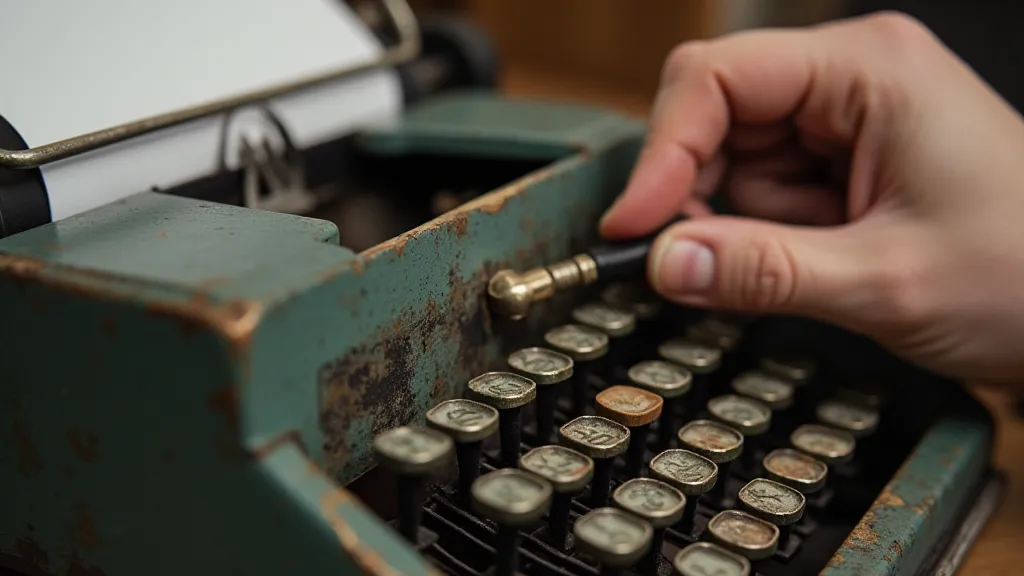
Important Considerations
- Disassembly: Complex rust removal often requires disassembling parts of the typewriter. This is best left to experienced restorers. Improper disassembly can cause irreparable damage.
- Painted Surfaces: Be extremely cautious when removing rust from painted surfaces. Aggressive methods can damage the paint, requiring repainting. The original finish is a crucial element of a typewriter's value and character.
- Finish Preservation: When removing rust, try to preserve the original finish as much as possible. If repainting is necessary, research period-correct paints and application techniques.
- Brand-Specific Issues: Certain typewriter brands might have unique vulnerabilities to rust due to their construction or original finishes. Research your specific brand for tailored advice. For example, early Olivetti models used materials that were particularly susceptible to corrosion. The nuanced issues faced when restoring a vintage machine often necessitates a deeper understanding of its manufacturing process and original materials.
- Rubber and Plastic Components: Rust removal processes can often degrade rubber and plastic parts. Be especially careful when dealing with these components, and consider replacing them if they show signs of damage. Petroleum-based lubricants can accelerate the breakdown of these materials.
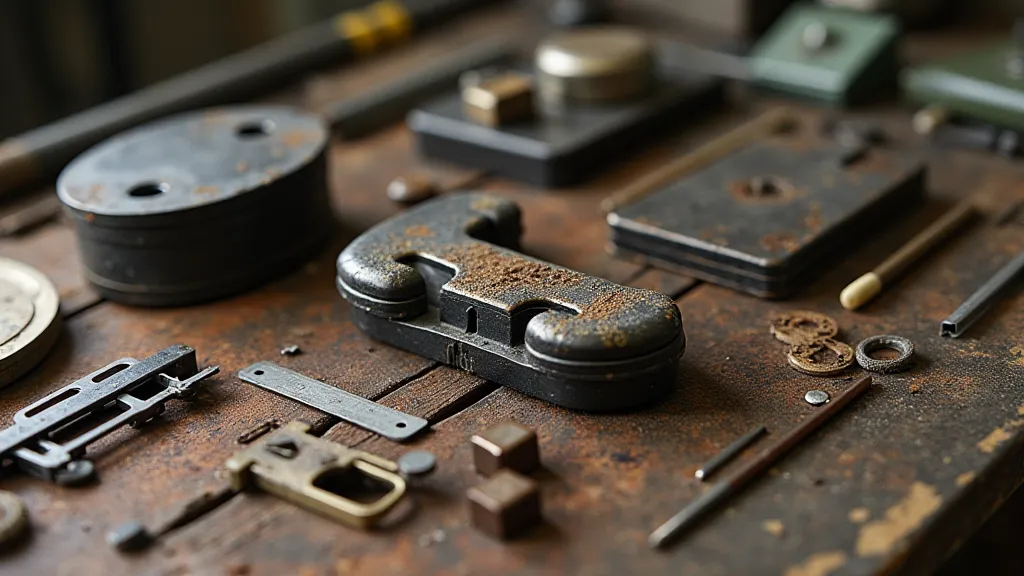
Expanding on Prevention: A Proactive Approach
While the steps outlined above provide a strong foundation for rust prevention, a truly proactive approach involves understanding the underlying causes and addressing them head-on. Beyond the simple storage and cleaning routines, consider these additional strategies:
- Environmental Control: Invest in a dehumidifier for storage areas, particularly if humidity is a recurring problem. Monitor temperature and humidity levels with a hygrometer.
Conclusion
Dealing with rust on vintage typewriters is an ongoing process. By implementing preventative measures and tackling rust promptly when it appears, you can significantly extend the lifespan and maintain the beauty of these iconic machines. Remember to be patient, methodical, and research your specific typewriter brand for the best results. The preservation of these mechanical marvels is a rewarding endeavor that connects us to a rich history of communication and craftsmanship.

